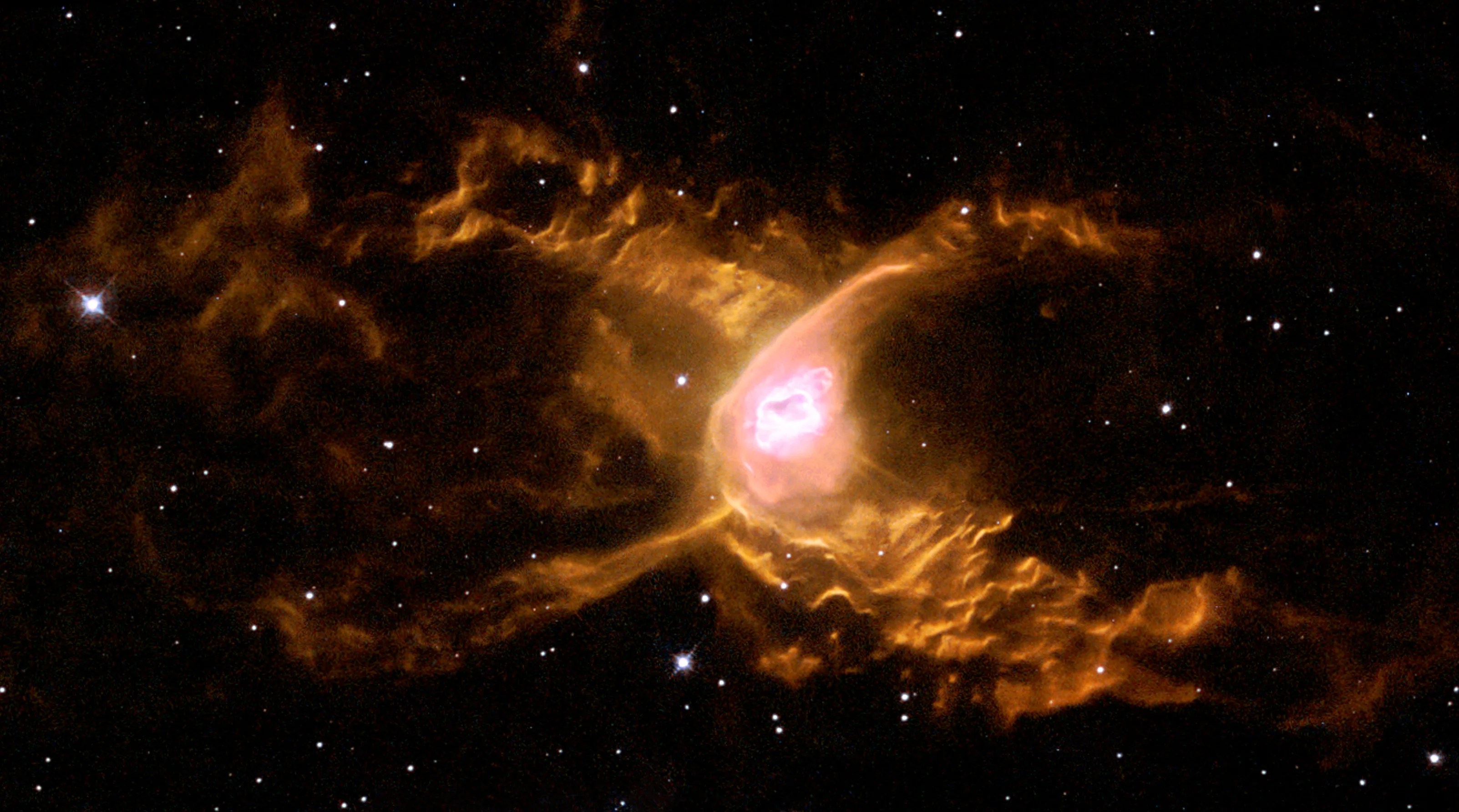1 min read

Image credit: ESA/Garrelt Mellema (Leiden University, the Netherlands)
Huge waves are sculpted in this two-lobed nebula called the Red Spider Nebula, located some 3,000 light-years away in the constellation of Sagittarius. This warm planetary nebula harbors one of the hottest stars known and its powerful stellar winds generate waves 100 billion kilometers (62.4 billion miles) high. The waves are caused by supersonic shocks, formed when the local gas is compressed and heated in front of the rapidly expanding lobes. The atoms caught in the shock emit the spectacular radiation seen in this image.

Got a stellar Hubble image on a t-shirt? Or maybe you’ve spotted a Hubble tattoo! Share your photos on Instagram, Twitter, Flickr and Facebook with #SpotHubble and maybe you’ll get a shout-out from @NASAHubble! - Learn More about #SpotHubble
Text credit: ESA (European Space Agency)
Share
Details
Last Updated
Mar 05, 2024
Editor
NASA Hubble Mission Team
Contact
NASA Hubble Mission Team
Related Terms
Keep Exploring







